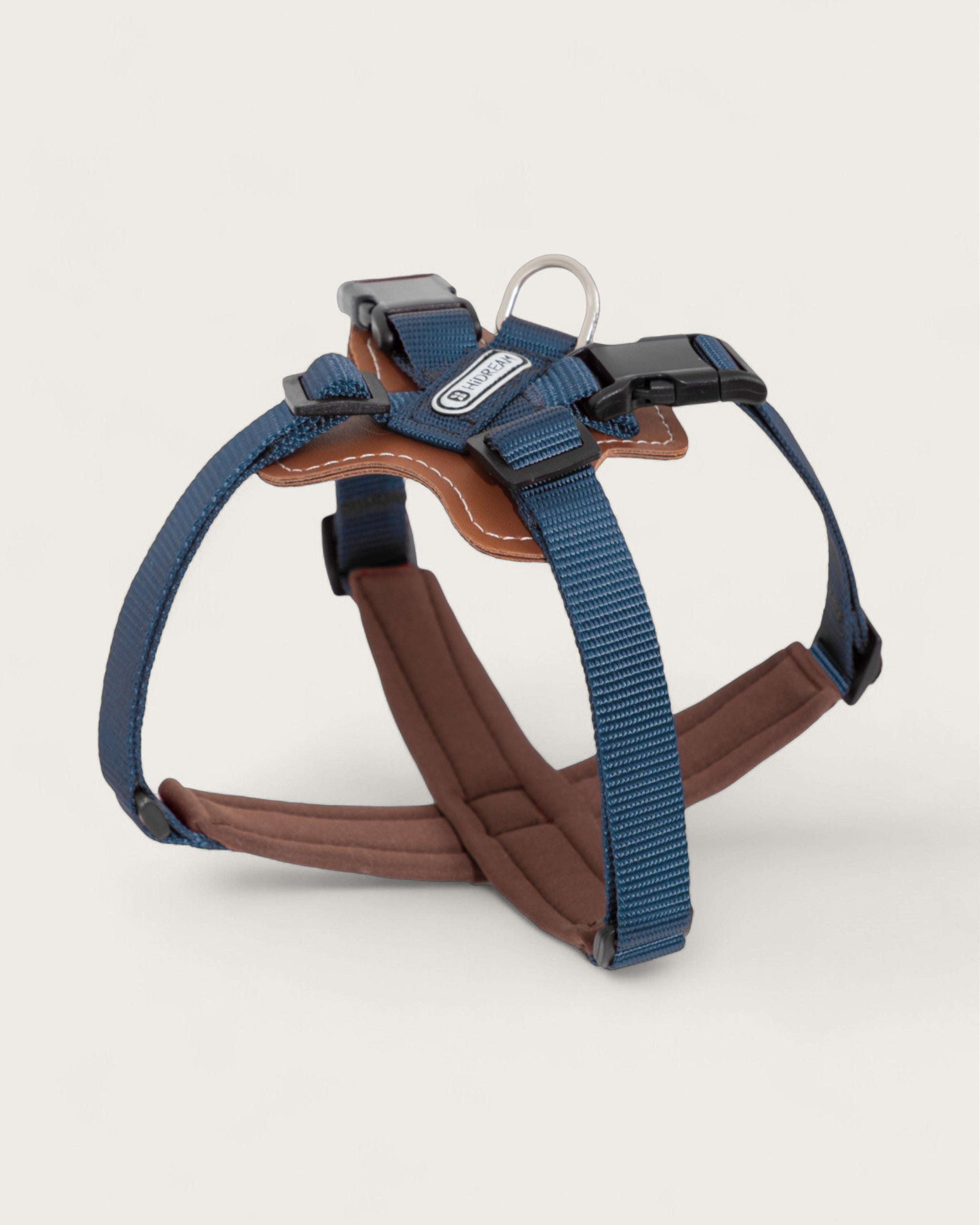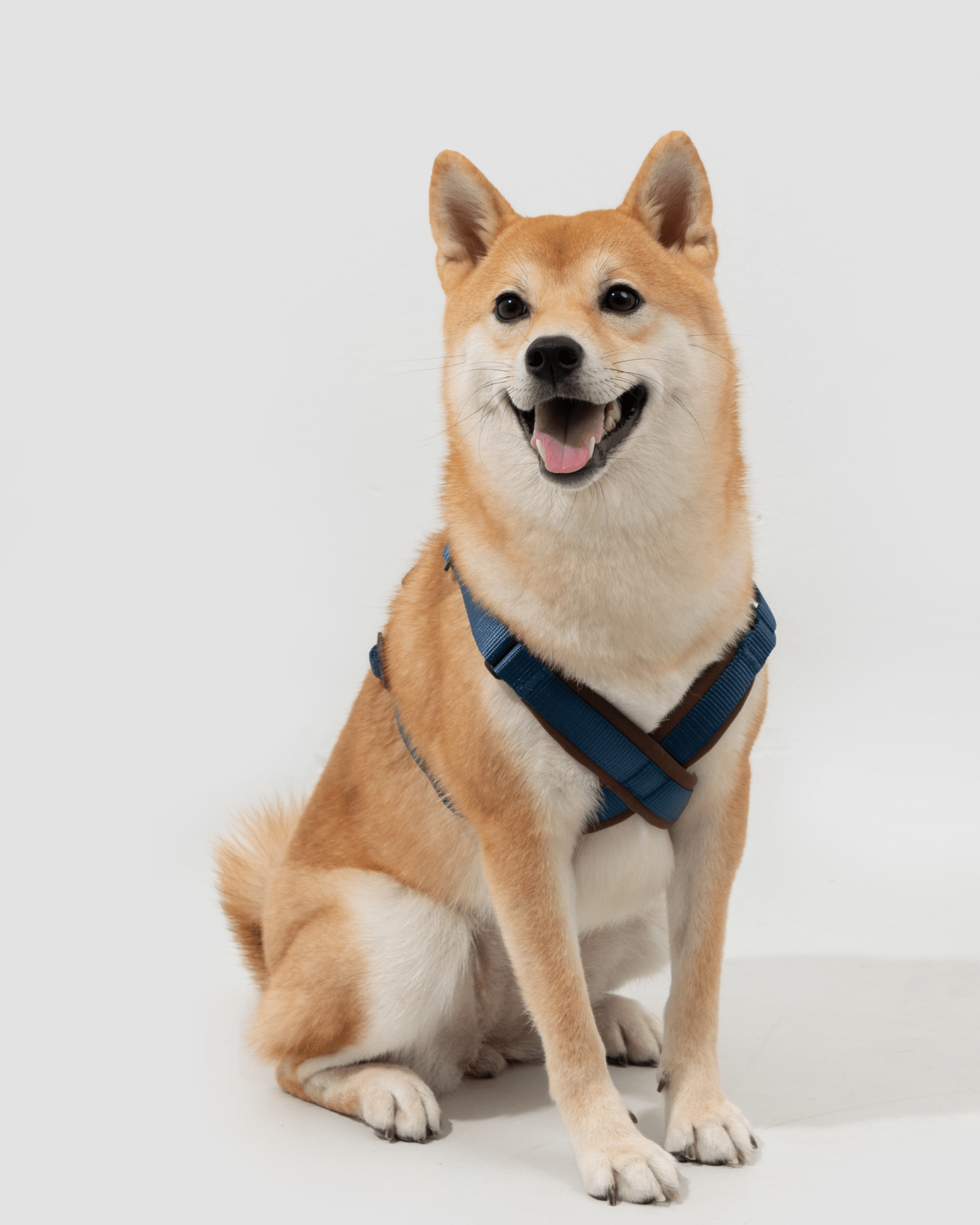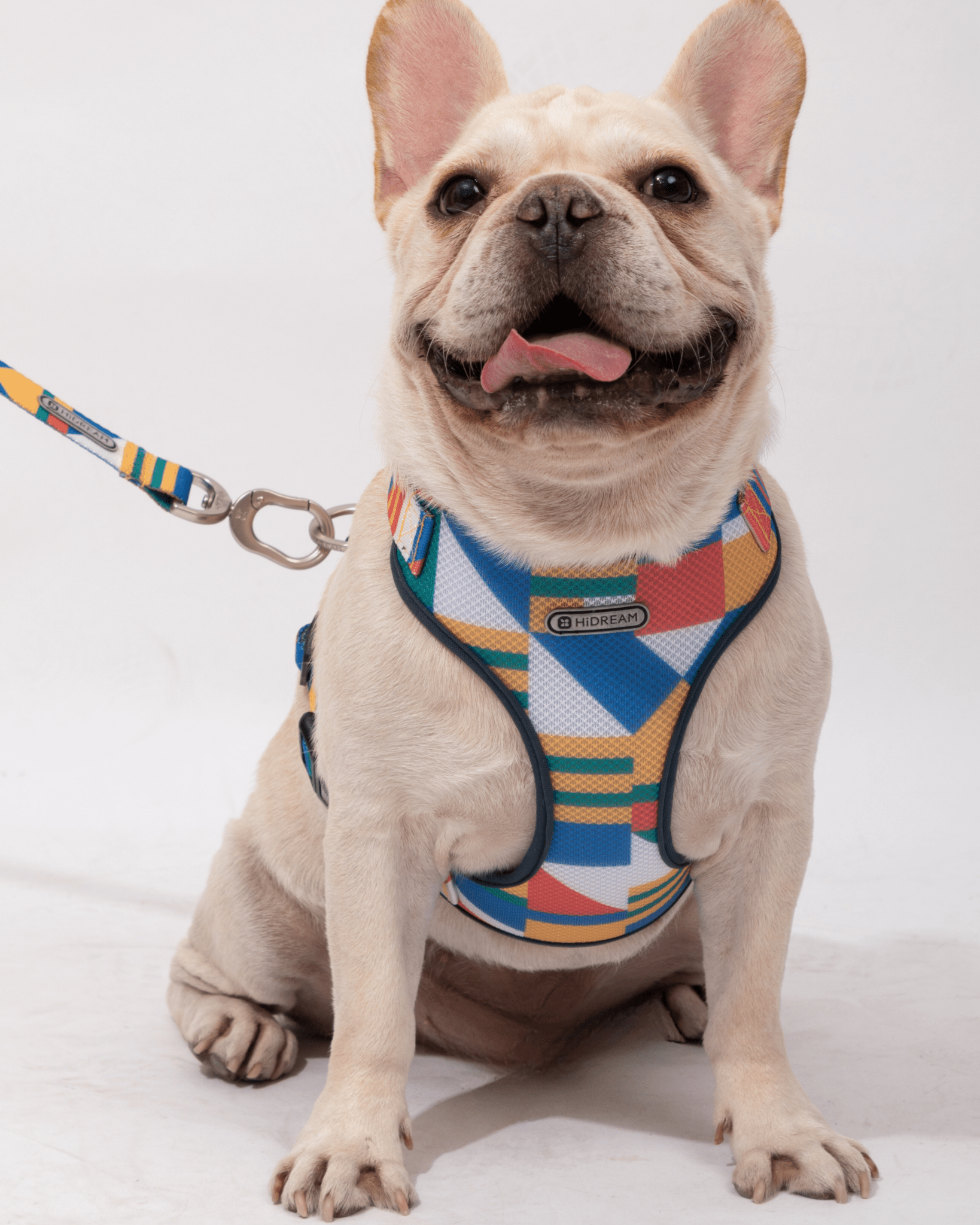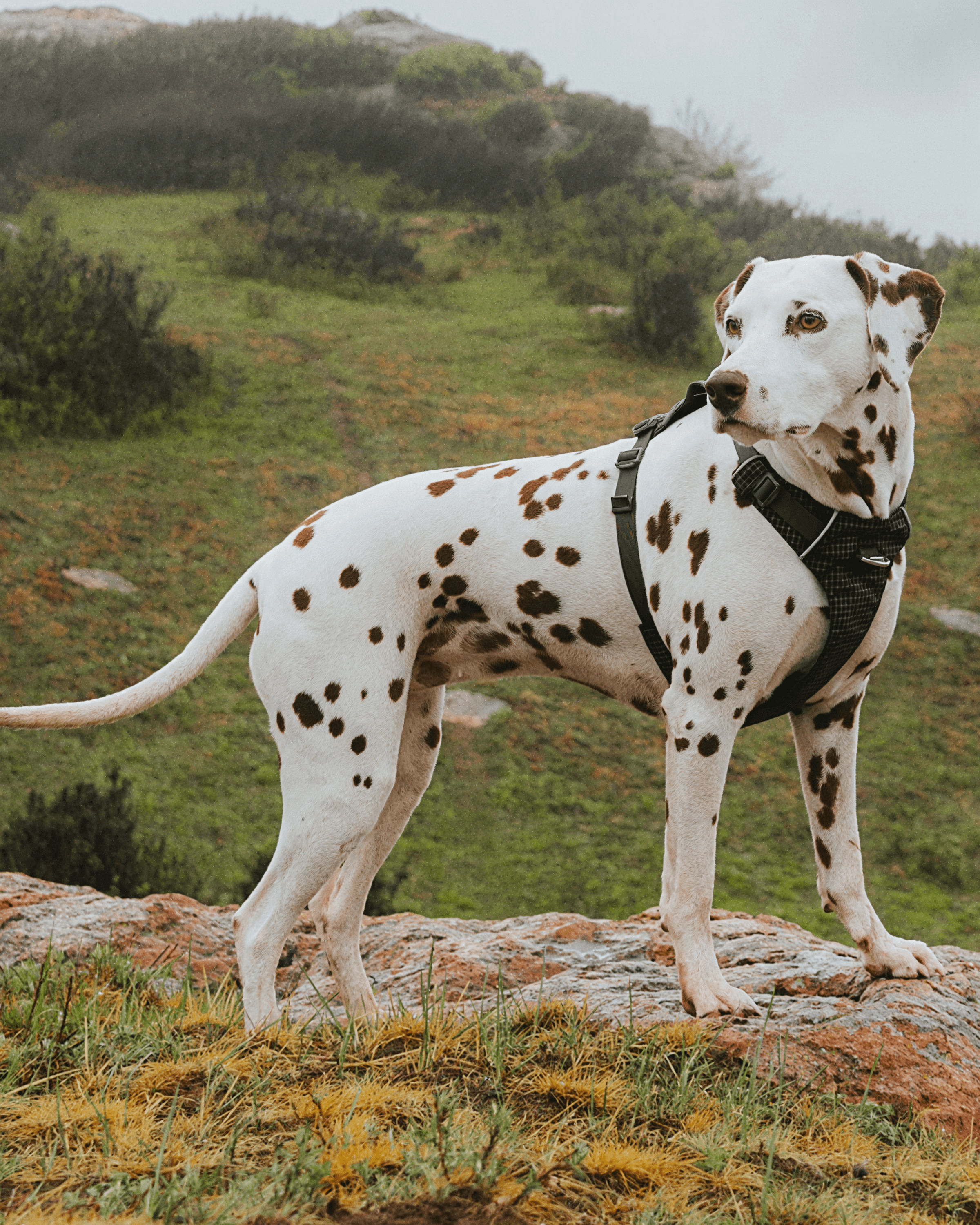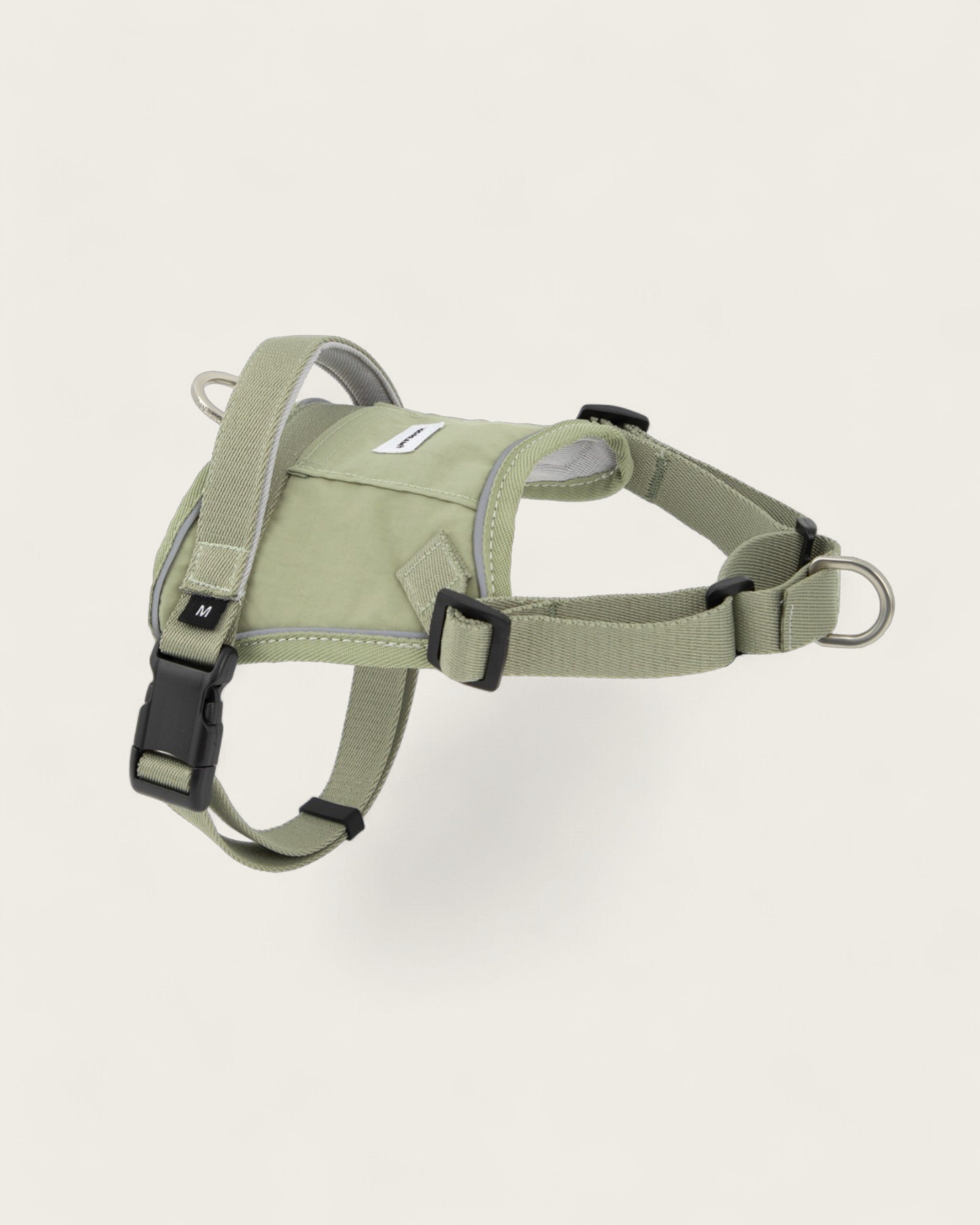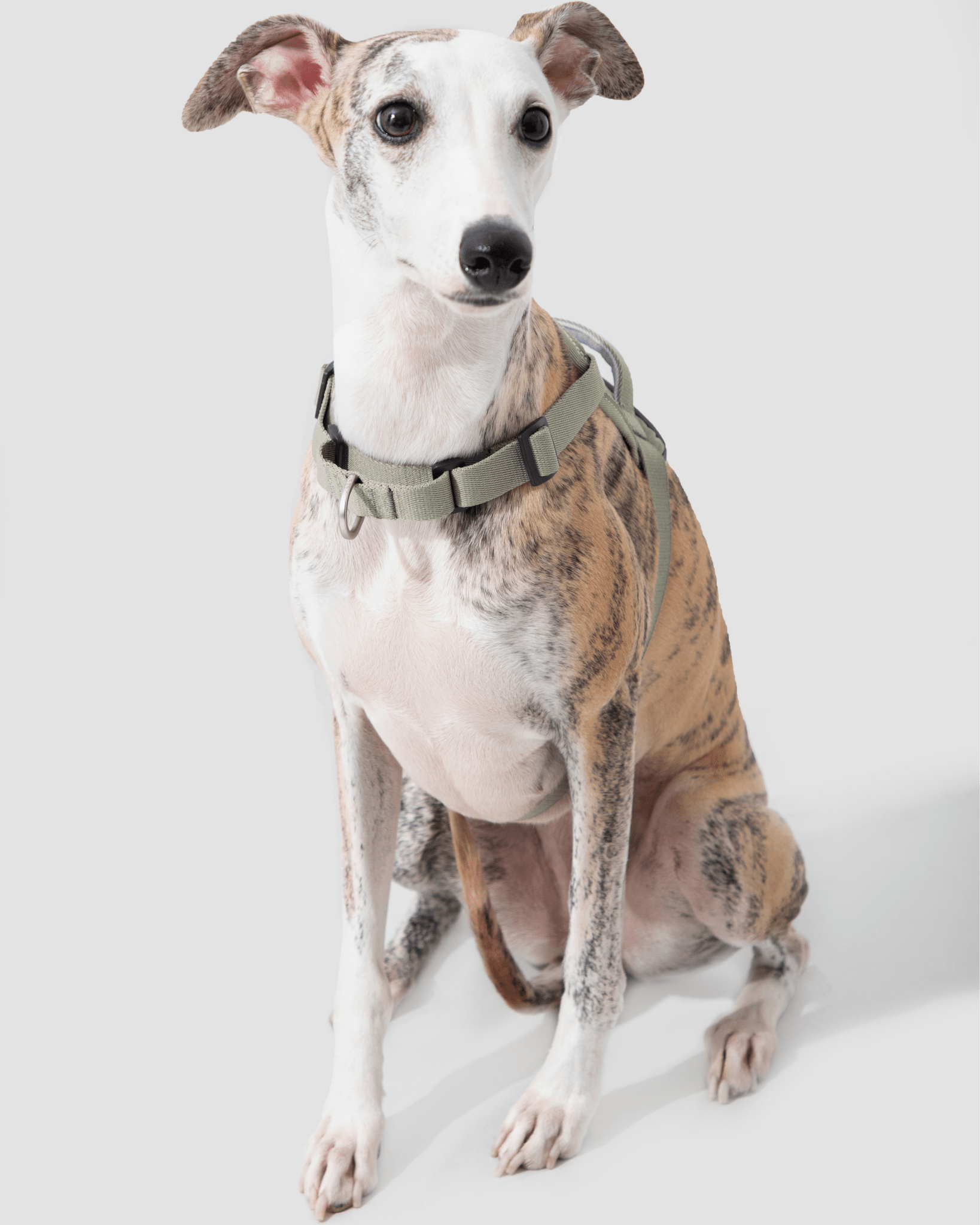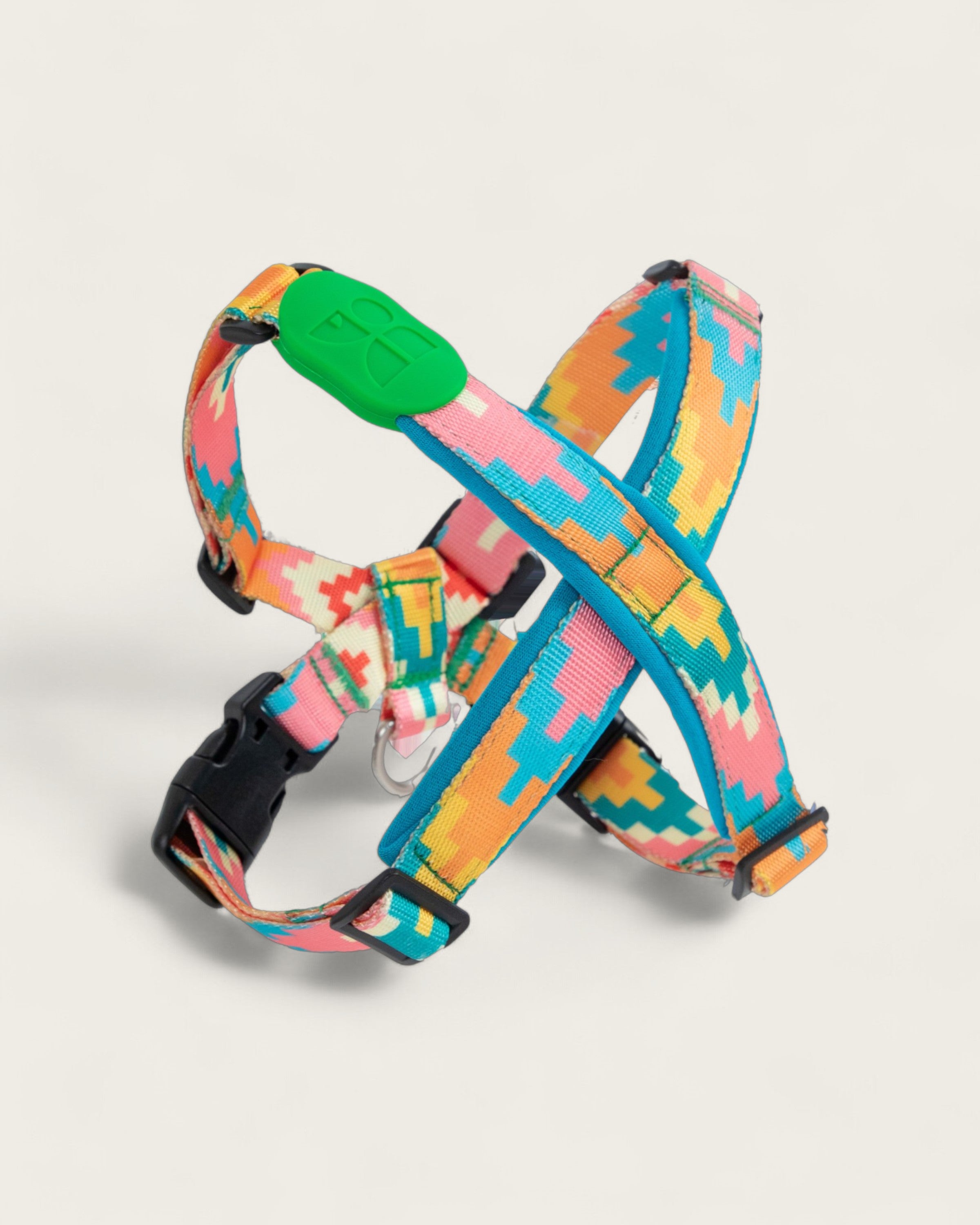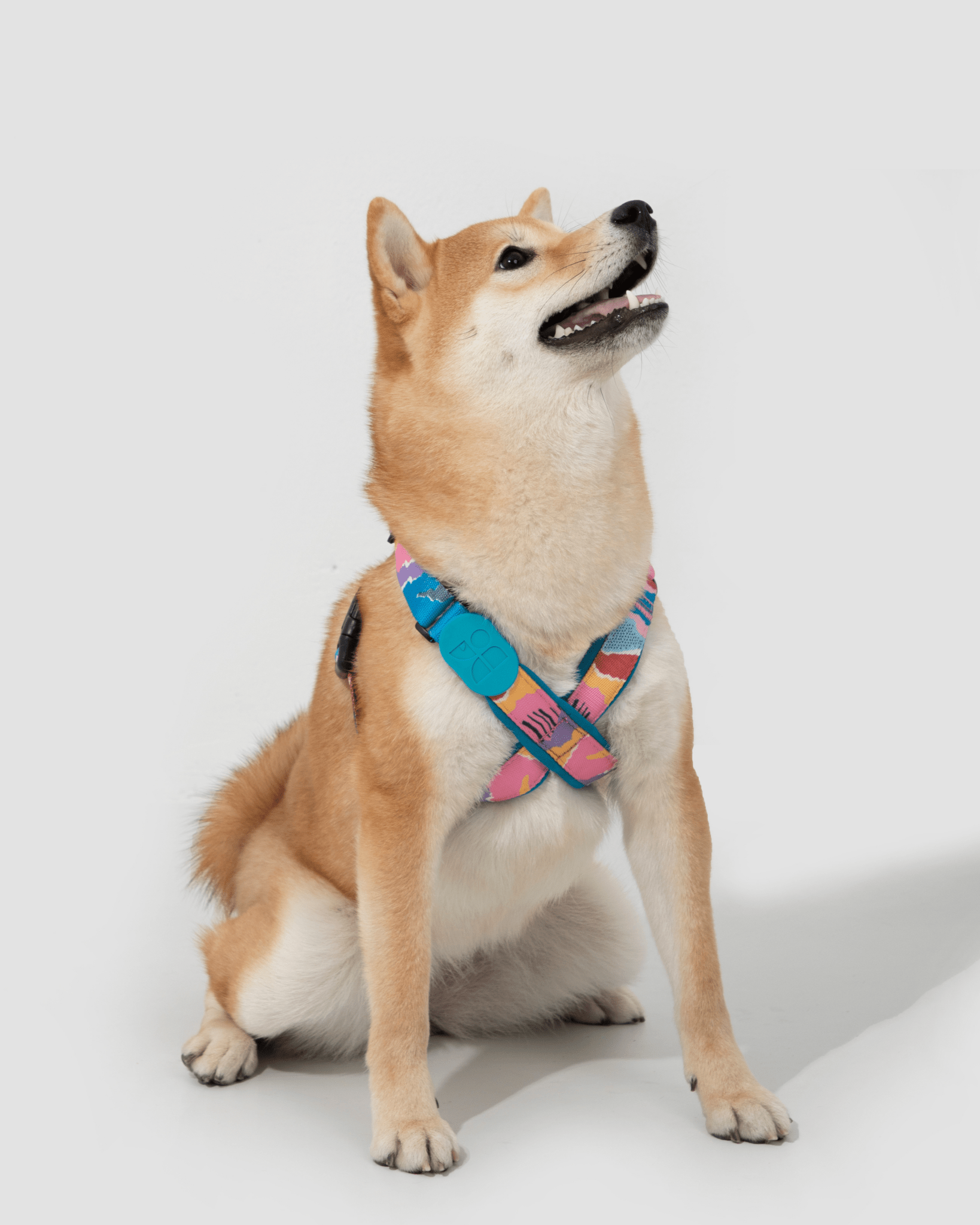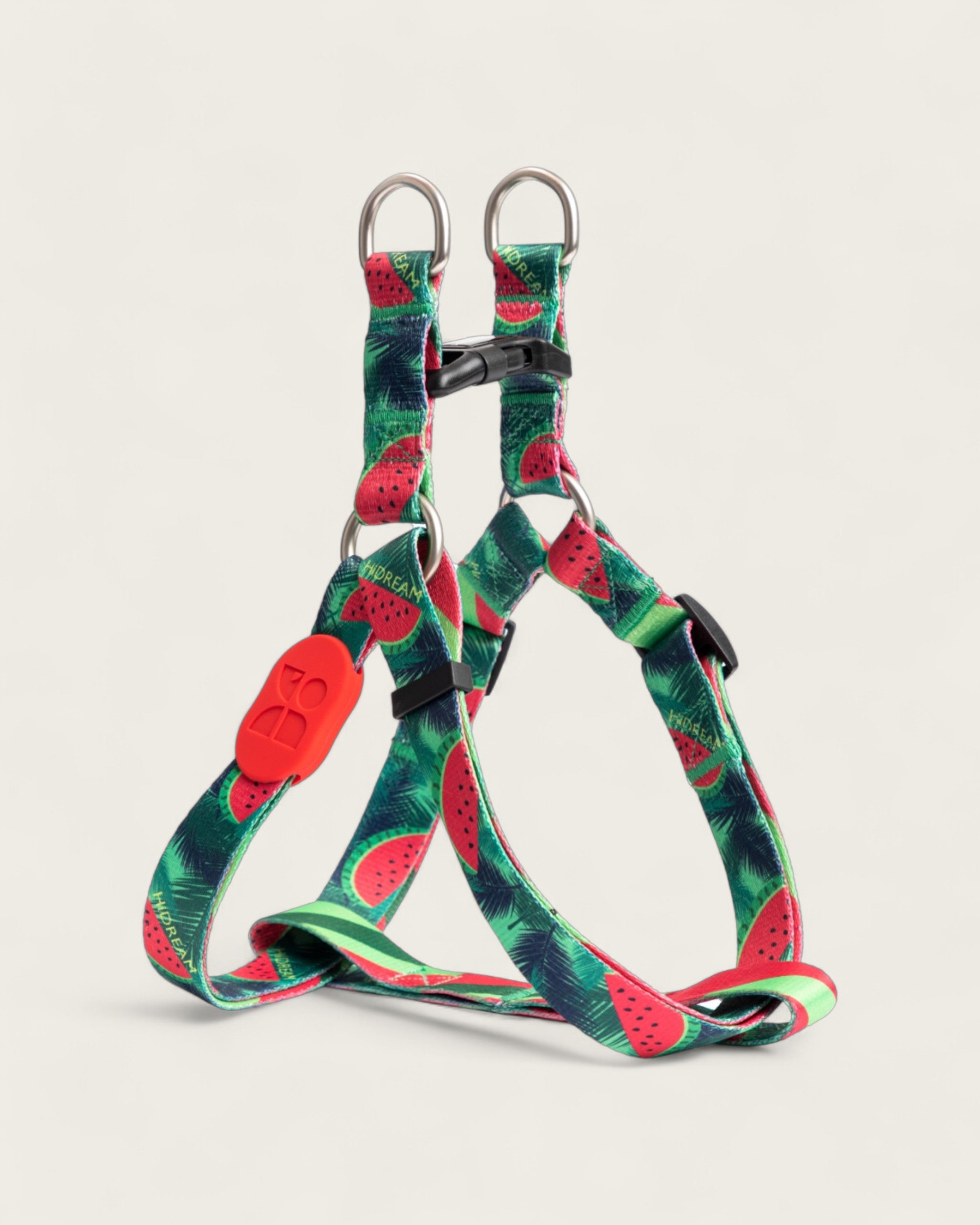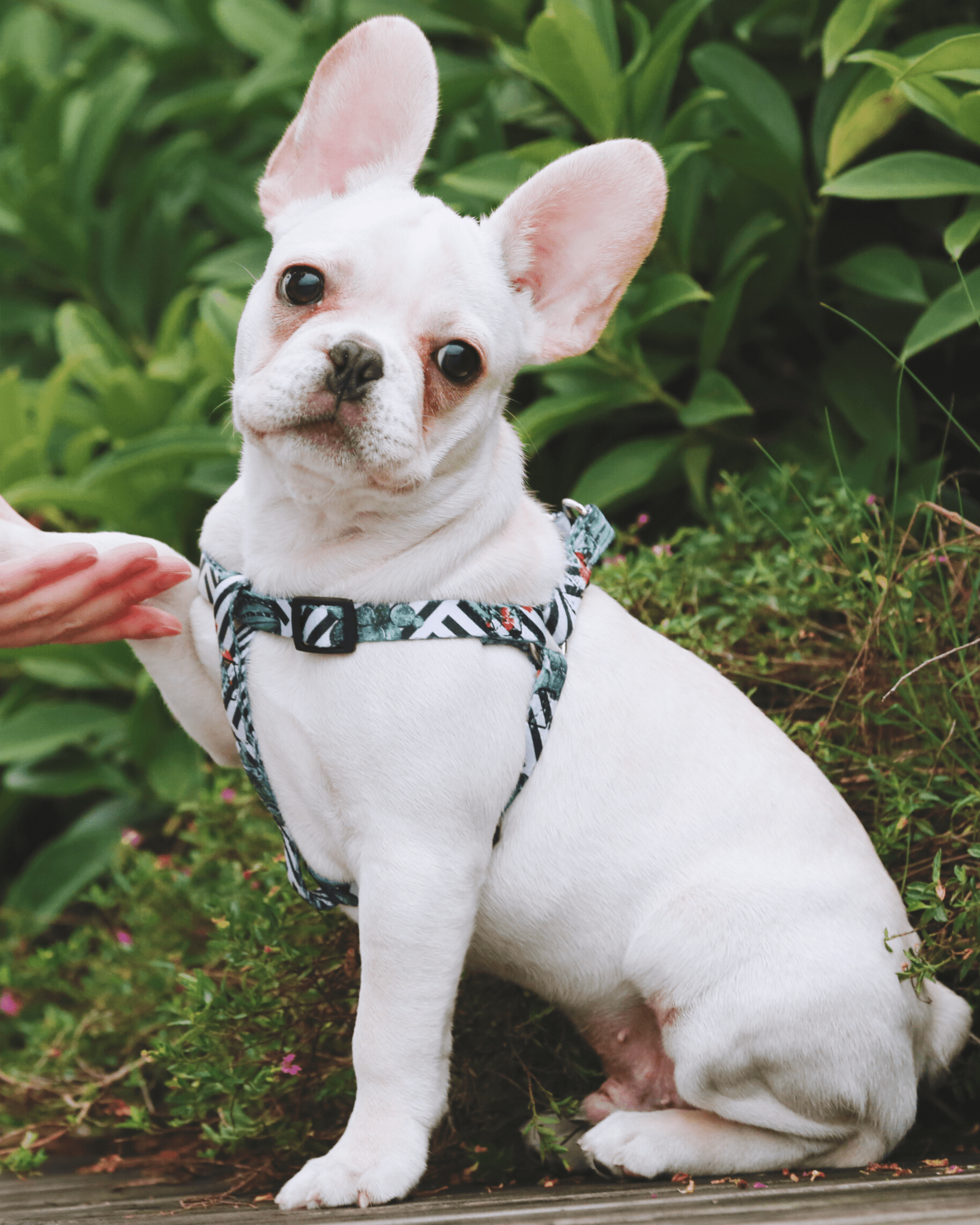Choosing the right harness for your dog is more than just finding the correct size; it’s about ensuring their comfort, safety, and overall experience during walks and adventures. A well-fitting harness can prevent injuries, reduce strain, and provide better control.

Why a Proper Fit is Important
A harness that fits properly ensures your dog stays comfortable and safe. Ill-fitting harnesses can cause:
- Chafing or discomfort during movement.
- Risk of slipping out, leading to unsafe situations.
- Strain on your dog’s chest or trachea, especially if it’s too tight.
Getting the measurements right prevents these issues, giving your dog the freedom to move naturally while staying secure.
Step-by-Step Guide to Measuring Your Dog
Follow these simple steps to accurately measure your dog:
1. Measure the Chest Girth
- The chest girth is the most critical measurement. Wrap a measuring tape around the widest part of your dog’s chest, just behind the front legs.
- Ensure the tape is snug but not tight; you should be able to slide two fingers underneath.
2. Measure the Neck Girth
- Place the tape around the base of your dog’s neck, where the harness will sit.
- Keep it loose enough to fit two fingers for added comfort.
3. Optional: Measure Back Length
- For certain types of harnesses, you may also need to measure your dog’s back. Start at the base of the neck (where it meets the shoulders) and measure to the base of the tail.
4. Consider Weight
- Some harness sizing charts include weight as a factor. Use a scale to ensure you’re matching your dog’s weight with the appropriate harness size.

Tips for Accurate Measurements
- Use a flexible tape measure for precision. If you don’t have one, a piece of string and a ruler work as an alternative.
- Measure your dog when they’re standing upright and calm. Lying down or sitting may result in inaccurate measurements.
- Repeat measurements 2-3 times to confirm accuracy.
What If Your Dog Falls Between Sizes?
It’s quite common for dogs to fall between standard harness sizes. Here’s what you can do in such cases:
- Opt for the larger size and adjust it for a better fit.
- Choose harnesses with multiple adjustment points to ensure a more tailored fit.
- Explore brands that offer intermediate or custom sizing options for added precision.

Choosing the Right Harness for Your Dog
Selecting the perfect harness for your dog involves more than just accurate measurements—it’s about understanding your dog’s needs and choosing a style that ensures their comfort and safety during every outing.
Understanding Harness Styles
Harnesses come in different designs, each suited to various needs and behaviors. Here’s a quick guide:
1. Standard Harness (Over-the-Head)
- Ideal for everyday use, this classic design provides control and prevents choking when your dog pulls.
- Features straps around the neck and chest with a D-ring on the back for leash attachment.
- Easy to adjust and works well for most dogs.
2. Step-In Harness
- Designed for convenience, your dog simply steps into this harness, which is then secured with a clip on their back.
- Perfect for squirmy pups or dogs new to harnesses, although it may have fewer adjustment options.
3. No-Pull Harness
• Also known as front-clip harnesses, these are great for reducing pulling behavior.
• Ideal for strong dogs or those who tend to lunge, offering better control during walks.
4. Vest Harness
- Provides additional support by covering more of your dog’s body.
- Suitable for small breeds, toy breeds, or dogs with health conditions requiring extra stability.

Comfort and Safety Features
In addition to style, here are other key factors to ensure your dog’s comfort and safety:
- Webbing: The width of the harness straps matters. Thinner straps are better for smaller dogs, while thicker straps work well for larger breeds or dogs with long hair.
- Padding: Extra padding minimizes chafing, especially for short-haired dogs or those prone to pulling.
- Reflective Material: Reflective details enhance visibility during nighttime walks or outdoor adventures. For example, reflective harnesses like the Chai’s Choice Premium Outdoor Adventure harness ensure added safety.
- Short Handle: A built-in handle provides extra control, allowing you to lift or assist your dog when needed. It’s especially useful for tired dogs, public transit, or emergency situations.
- Long Strap: Some harnesses include a long strap for support, helpful for injured dogs or those with mobility issues who need weight reduction during walks.
No matter which dog harness you choose, you’re ensuring your pup’s comfort and safety—a worthwhile investment for their well-being. Once you have your dog’s measurements, you can also explore other items, like adorable dog clothing!






